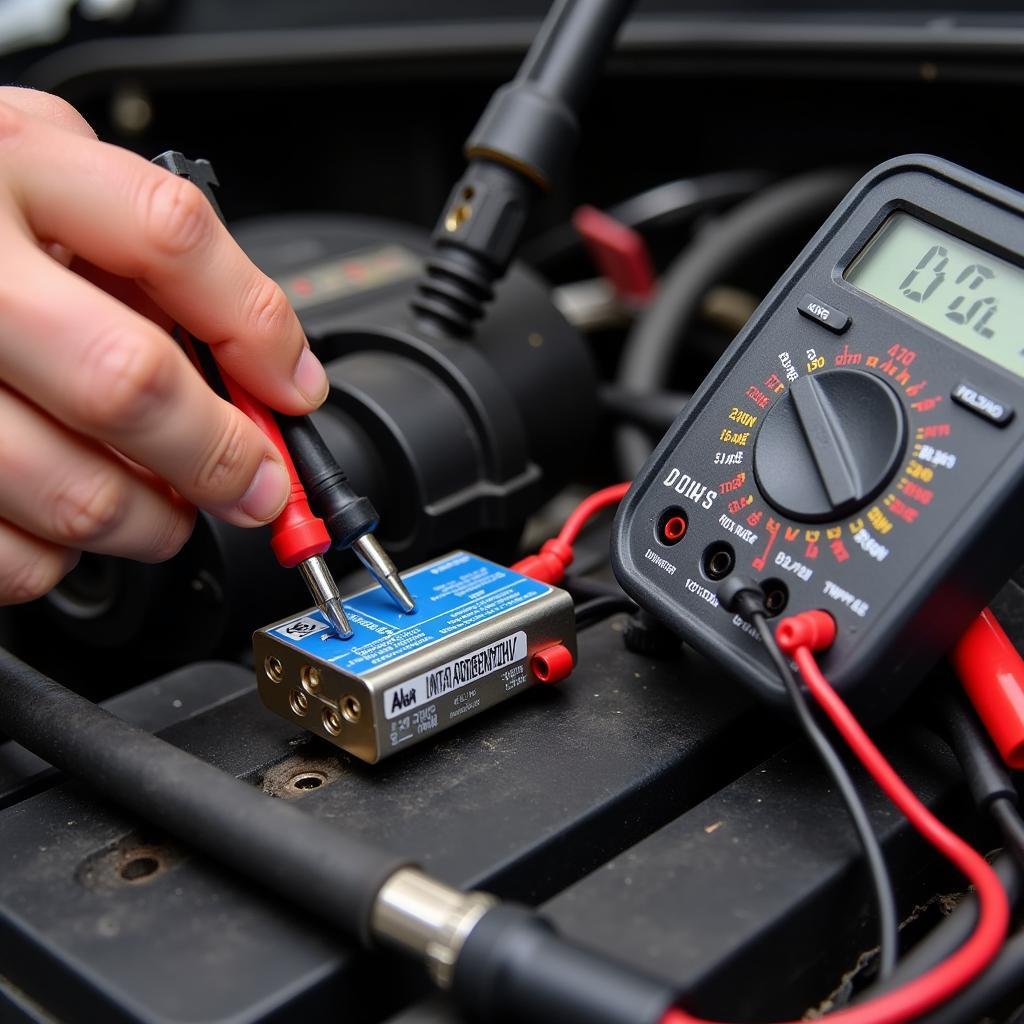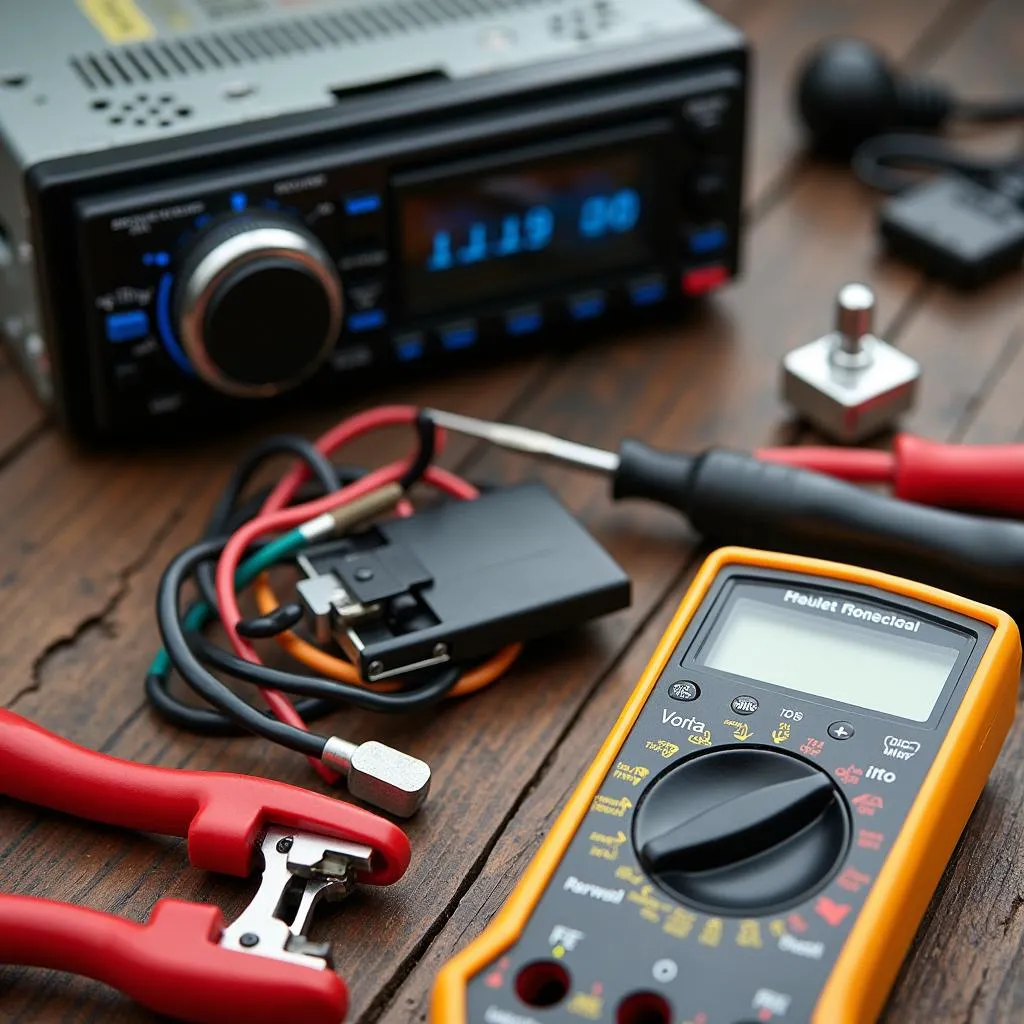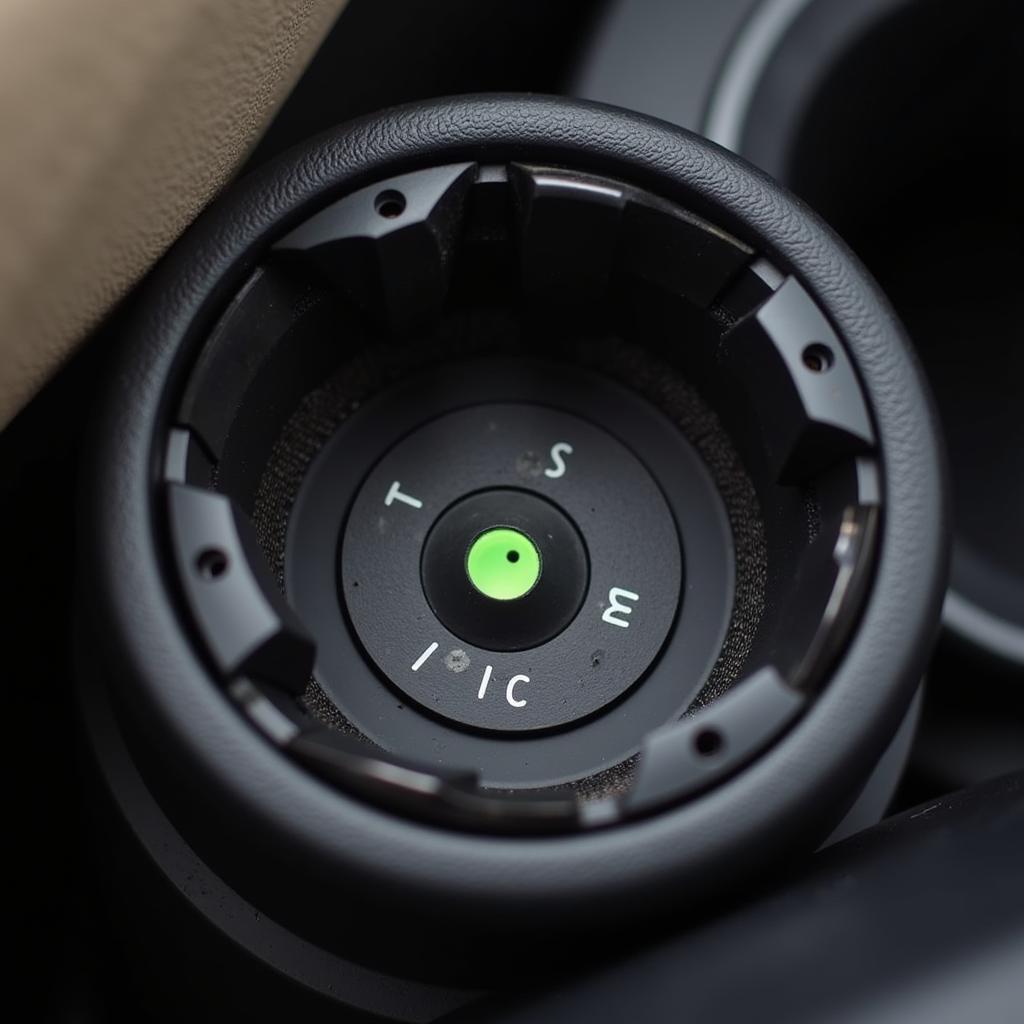Is your car struggling to start? Are your headlights dimming? You might be dealing with a failing battery or alternator. Understanding the difference and identifying the culprit is crucial for getting back on the road quickly. This guide helps you diagnose the problem and find a solution.
 Testing a car battery and alternator with a multimeter
Testing a car battery and alternator with a multimeter
Understanding the Battery and Alternator
Your car’s electrical system relies on two key components: the battery and the alternator. The battery provides the initial power to start the engine, while the alternator takes over once the engine is running. The alternator recharges the battery and powers all the electrical systems in your car, from the headlights to the radio. When one of these components fails, it can lead to a range of issues, from a simple inconvenience to being stranded on the side of the road. Knowing how each part functions is the first step in diagnosing the problem.
How the Battery Works
The battery stores electrical energy and delivers it on demand. Think of it as a reservoir of power. When you turn the key, the battery sends a surge of electricity to the starter motor, cranking the engine to life. Over time, batteries wear out and lose their ability to hold a charge. Extreme temperatures, both hot and cold, can also accelerate battery degradation.
How the Alternator Works
Once the engine is running, the alternator becomes the primary power source. It’s a small generator driven by the engine’s belt system. As the engine turns, the alternator spins, creating an electrical current that recharges the battery and powers the car’s electrical systems. A failing alternator can lead to a drained battery and eventually a complete electrical system failure.
Signs of a Bad Battery
- Slow engine crank: The engine cranks slowly or struggles to turn over.
- Dim headlights: Headlights are noticeably dimmer than usual, especially at idle.
- Clicking sound when turning the key: The starter motor clicks rapidly, indicating a low battery charge.
- Electrical issues: Problems with interior lights, radio, or power windows.
- Swollen battery case: A physically deformed battery case is a clear sign of damage.
Signs of a Bad Alternator
- Dim or flickering headlights: Headlights fluctuate in brightness, especially when accelerating.
- Battery warning light: The battery light illuminates on the dashboard.
- Dead battery: The battery repeatedly dies, even after being jump-started.
- Whining or growling noise: Unusual noises coming from the alternator area.
- Burning smell: A burning rubber or electrical smell may indicate an overworking or failing alternator.
2018 volvo key fob replacement
Diagnosing the Problem
How can you tell if it’s your battery or your alternator? A simple test can help you pinpoint the culprit. With the engine running, disconnect the negative battery cable. If the engine dies, the alternator is likely the problem. If the engine continues to run, the battery is probably the issue. However, it’s always best to have a professional diagnose the problem to ensure an accurate assessment.
Troubleshooting and Solutions
Once you’ve identified the problem, you can take steps to fix it. Replacing a battery is a relatively straightforward process. However, alternator replacement is more complex and often requires professional assistance.
“Regularly checking your battery and alternator can prevent unexpected breakdowns,” advises John Smith, Senior Automotive Technician at Auto Experts Inc. “Preventive maintenance is always the best approach.”
Remote Diagnostics and Software Solutions
Modern vehicles rely heavily on software. Remote diagnostics and software updates can sometimes resolve electrical system issues without physical repairs. Services specializing in remote diagnostics and programming can often identify and fix software glitches related to the battery and alternator systems, saving time and money.
Conclusion
Knowing the signs of a failing battery or alternator can save you from a frustrating and potentially dangerous situation. By understanding how these components work and how to diagnose the problem, you can take proactive steps to keep your car running smoothly. If you suspect a problem with your battery or alternator, don’t hesitate to seek professional help. Remember, a little preventive maintenance can go a long way. Keep your car healthy and stay safe on the road.
how to start car without key fob
FAQ
- How long does a car battery typically last?
- Can I jump-start a car with a bad alternator?
- How much does it cost to replace a car battery or alternator?
- What are the symptoms of a bad voltage regulator?
- How often should I have my car’s electrical system checked?
- Can a bad alternator damage the battery?
- What causes an alternator to fail?


